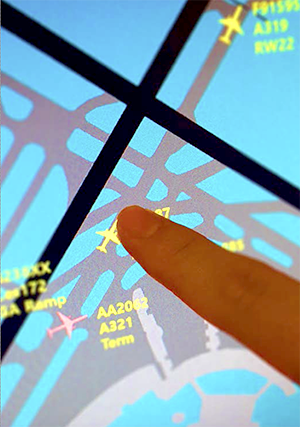Purdue University received three awards in the 2016 University Design Competition for Addressing Airport Needs, sponsored by the Transportation Research Board (TRB) Airport Cooperative Research Program (ACRP). The competition encourages out-of-the-box approaches to airport issues while providing quality educational experiences and exposure to aviation and airport-related careers.
 Student teams, made up of graduate and undergraduate students, were recognized for their projects focused on three separate topics: Runway Safety, Airport Environmental Interactions, and Airport Management and Planning. They are required to work with a faculty advisor and reach out to airport operators and industry experts to obtain advice and assess the practicality of their proposed designs/solutions.
Student teams, made up of graduate and undergraduate students, were recognized for their projects focused on three separate topics: Runway Safety, Airport Environmental Interactions, and Airport Management and Planning. They are required to work with a faculty advisor and reach out to airport operators and industry experts to obtain advice and assess the practicality of their proposed designs/solutions.
In the Runway Safety category, a two-person Purdue team received second place for their Touchscreen Air Traffic Management System (TAMS). Jin Young Kim and Jason Hart worked with Tim Ropp, clinical associate professor in the School of Aviation and Transportation Technology. The team proposed introducing a touchscreen interface for air traffic controllers to provide visual directions to flight crews, such as “stop and hold”, “proceed” or “clear”. Their project is designed to provide an additional layer of safety and operational efficiency, especially at high density airports and to limit technical or linguistic challenges that occur during voice communications. This proposal was created as a project for the Aerospace and MRO Technology Innovation Center, led by Ropp. It is the fourth national design award won by students in the center.
Two other awards were won by students in a graduate-level course focused on aviation sustainability, taught by Mary Johnson, associate professor in the School of Aviation and Transportation Technology. She served as advisor to both teams.
In the Airport Environmental Interactions category, a Purdue team proposal on selecting the best alternative energy source received third place. Graduate students Rohit Burani, Pedram Motevalli and Emily Thomas developed a step-by-step procedure for airport project management teams to use to plan, implement, and operate renewable energy sources. The process includes a design matrix for comparing options and a risk assessment for implementation.
In the Airport Management and Planning category, a Purdue team proposed a Semi-Autonomous Electric Taxi System for airports and received third place. David Costas, Grace Lin and Logan Voss reconsidered airport ramp and gate controls in an effort to reduce fuel consumption during aircraft taxiing. Their design provides a plan to use autonomous tugs to move aircraft along airport surfaces at busy, single-runway airports.
A complete list of 2016 winners is available on the competition website along with full proposals for each.
About the competition
The ACRP is sponsored by the Federal Aviation Administration (FAA) and managed by the National Academies of Sciences, Engineering, and Medicine through the TRB. This competition is managed for the ACRP by the Virginia Space Grant Consortium based in Hampton, Va. Partnering organizations are: American Association of Airport Executives; Airport Consultants Council; Airports Council International – North America; National Association of State Aviation Officials; and University Aviation Association. Partners assist in developing competition guidelines, providing expert advisers for teams, disseminating competition information to organizational members, and participating in design reviews.
